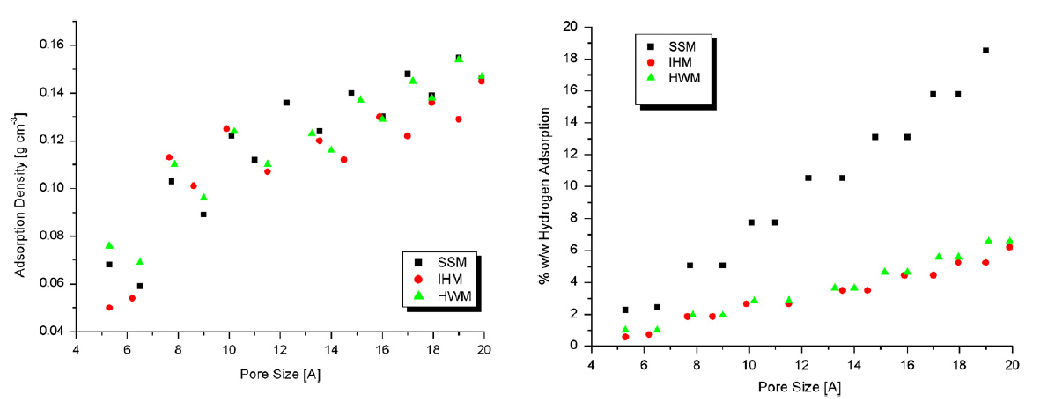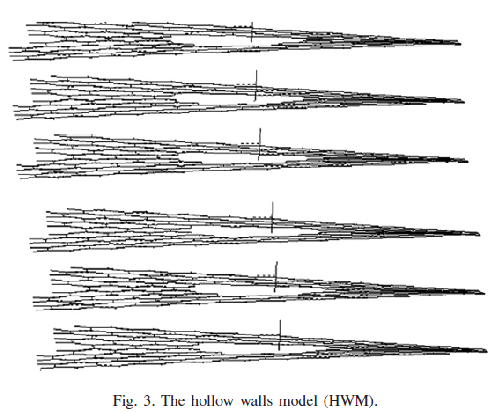Predictions for molecular hydrogen adsorption in microporous carbons via molecular dynamics simulations and a suggestion for a hydrogen storage medium
This work aims at resolving the discrepancy between theoretical predictions on the physical adsorption of molecular hydrogen on carbonaceous solids, by exploiting molecular dynamics simulations of the adsorption process. In continuance of our previous work, three models were constructed for the depiction of the microporous carbonaceous structure.

The first one (SSM) consisted of only two parallel sheets, being the lightest one used. The second (IHM) and third (HWM) models comprised structural imperfections in the form of pits and holes into their structure. Structural imperfections seemed to have a slight augmentative effect on the adsorption process. It was concluded that the addition of extra sheets to the walls did not result to any enhancement of the adsorption efficiency of the solid model. On the contrary, the lightest model exhibited superb results for the % weight-by-weight adsorption of hydrogen, approaching the highest value reported. Finally, a couple of suggestions on the development of a material for the storage of hydrogen were derived, based on the above conclusions.

Continuing our previous work, three new slit shaped carbonaceous pore models (SSM, IHM and HWM) were constructed for the investigation of molecular hydrogen adsorption. SSM comprised two parallel sheets, being the lightest model used. SSM was constructed for comparison reasons to the heavier pore models of our previous work. IHM is a slit shaped model in which every wall comprises three carbonaceous sheets at 3.34 ˚A apart. From the inner two sheets 12 benzene rings had been removed, forming a hole on the surface with an area of approximately 51 ˚A 2. HWM’s walls also comprise three parallel carbonaceous layers from which 12 benzene rings have been removed, forming a hole in the whole solid structure. For all three models examined, hydrogen density was found to be higher than the respective liquid hydrogen’s density. Multilayer adsorption at critical pore sizes led to a sigmoid behavior of both adsorption density and hydrogen % w/w adsorption. SSM exhibited outstanding results for the % w/w hydrogen adsorption, reaching as high as 18.53% w/w for the 20 ˚A pore size. To the best of our knowledge, this result is the second highest reported. On the other hand, IHM and HWM exhibited lower results, ranging from 0.57 to 6.33% w/w and 1.01 to 6.91% w/w, respectively. Adsorption field equality was proved for the three models, leading to an introductory suggestion for the development of a material for the storage of hydrogen, via physical adsorption.
